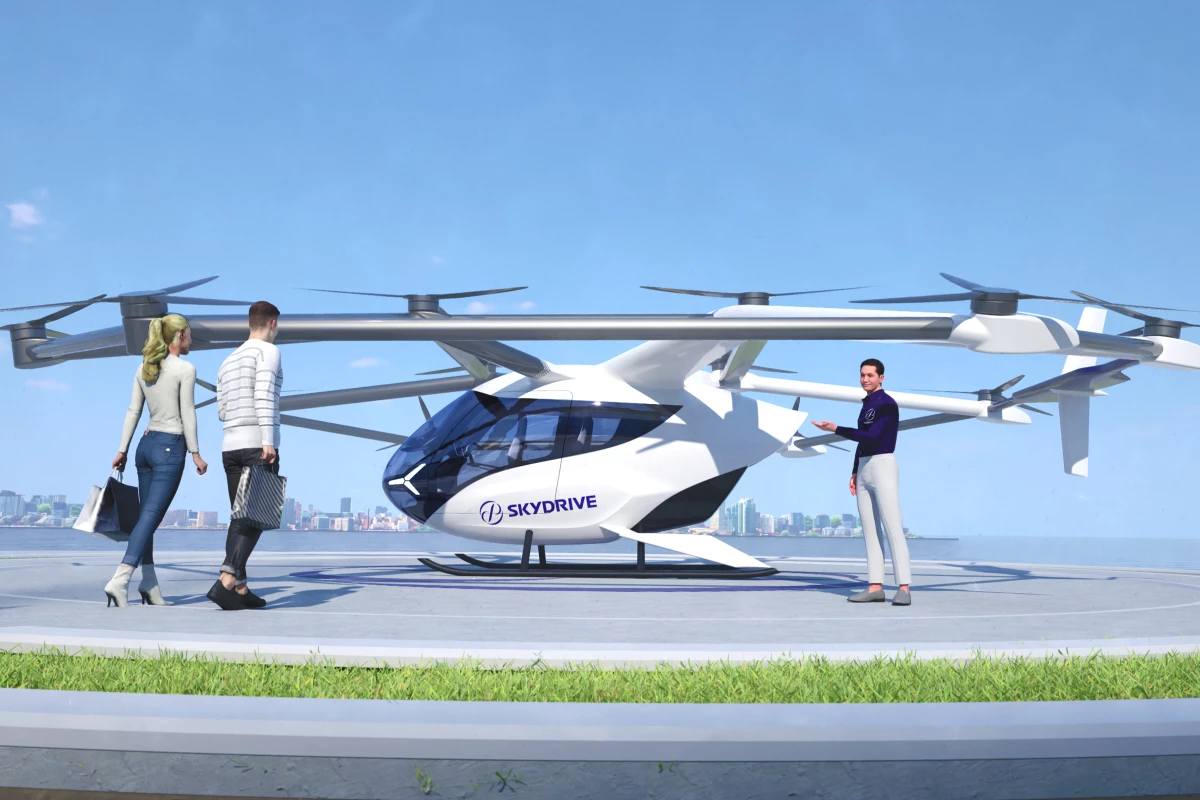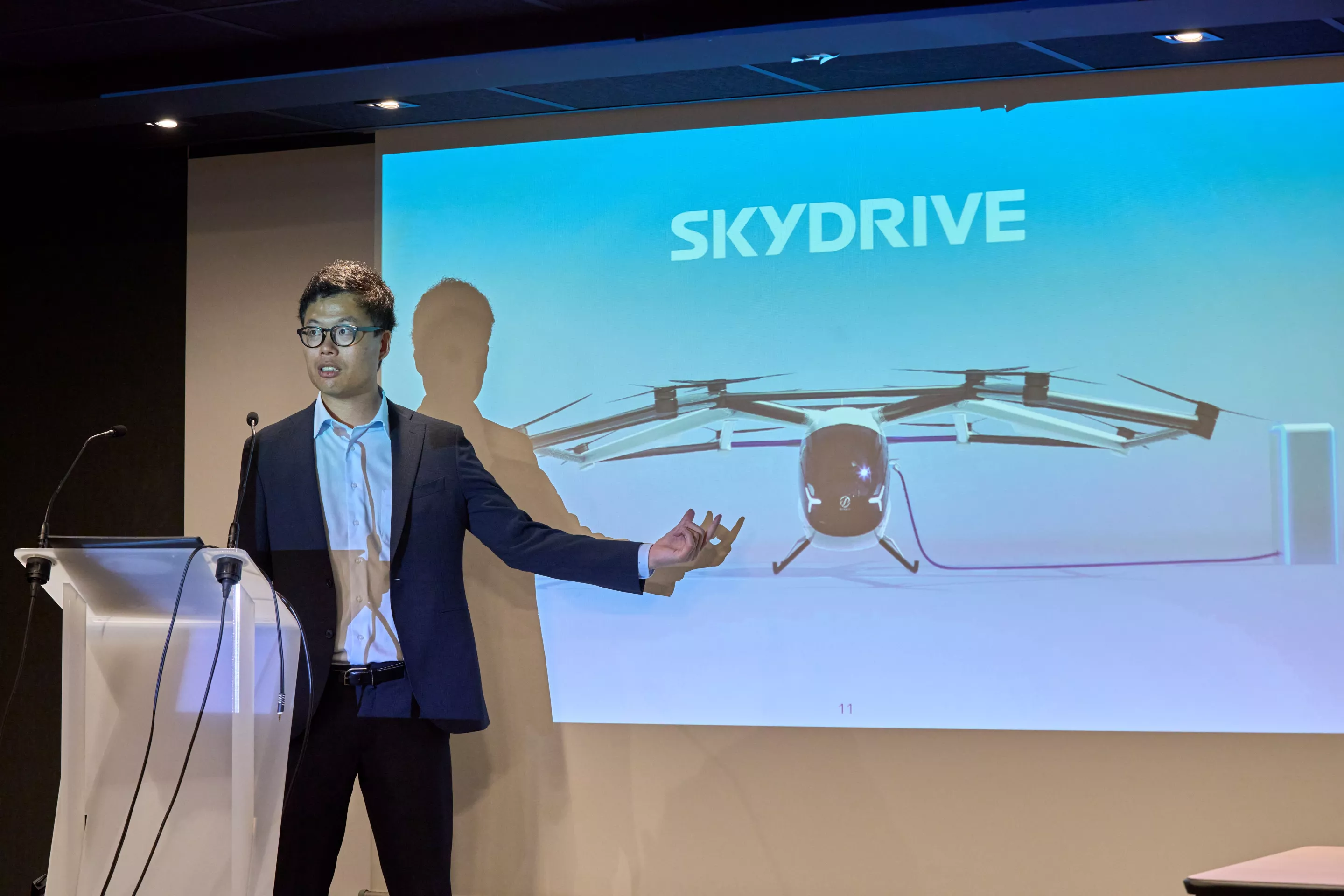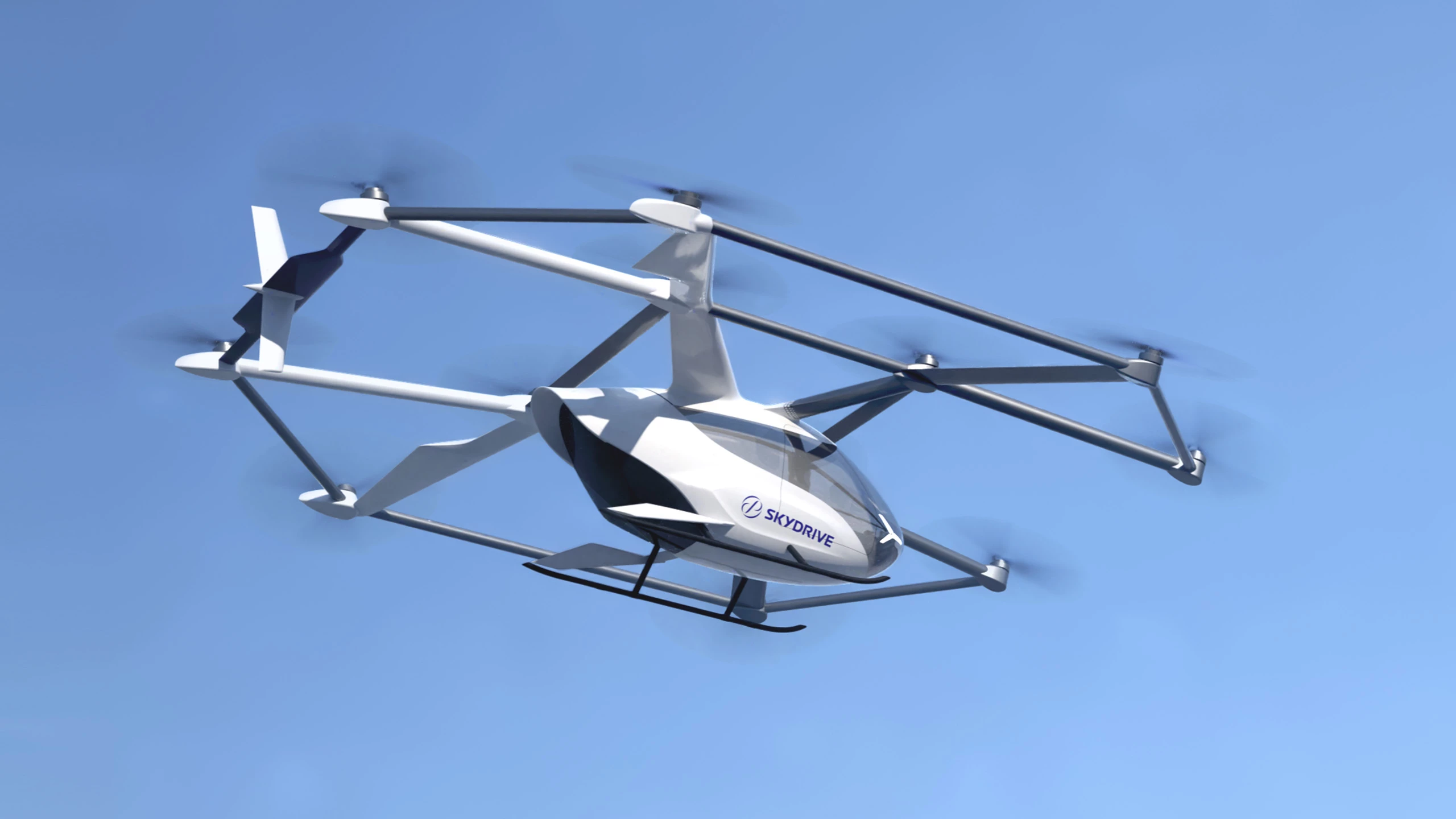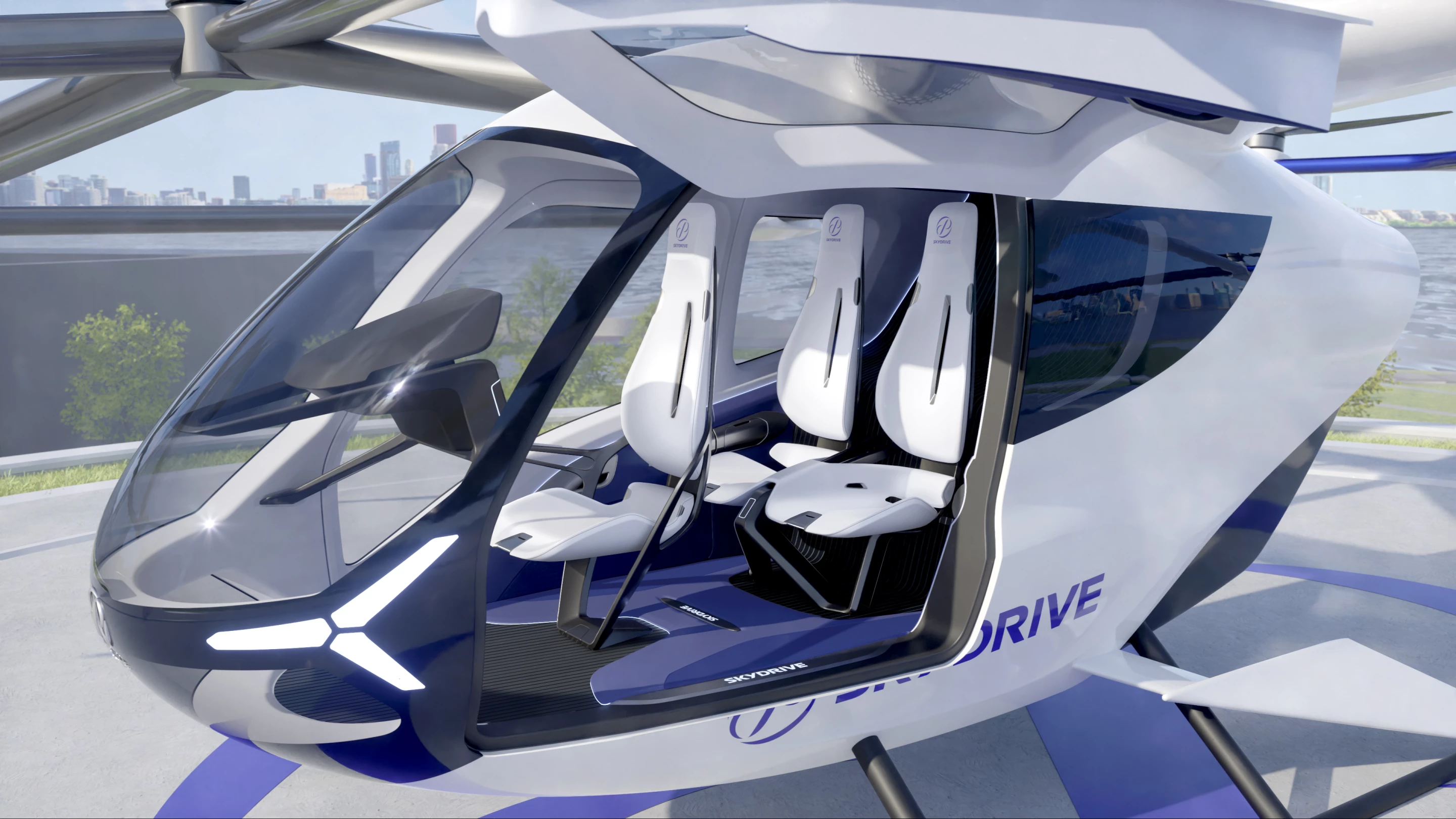Last year, Tokyo-based SkyDrive announced plans to launch an eVTOL taxi service at the World Expo 2025 in Osaka, Japan. Now the company is at the Paris Air Show to reveal design and specs changes and a production deal.
Originally, the company's SD-05 air taxi would only be able to accommodate one passenger and a pilot, but now the newly named SkyDrive eVTOL (Electric Vertical Take Off and Landing) has grown to 13 x 13 x 3 m (43 x 43 x 10 ft) dimensions and added another passenger seat to "enable a more profitable operation and a more convenient and enjoyable experience."
The battery electric flyer is now expected to have a maximum takeoff weight of around 1,400 kg (3,100 lb) and will still operate using 12 motor/prop units. Essentially, this is a non-transitioning "big drone" design, highly reminiscent of Volocopter's short-range 2X, which has been flying manned missions for several years now.
Top speed remains unchanged at 100 km/h (62 mph), but the per-charge range has increased to 15 km (9.3 miles). That sounds pretty pathetic compared with the 250-plus km (150-plus miles) we're already seeing from transitioning eVTOLs like the Autoflight Prosperity and Joby S4, but both Volocopter and SkyDrive clearly feel it's enough for inner-city rooftop-to-rooftop hops over traffic, or short sightseeing tours.
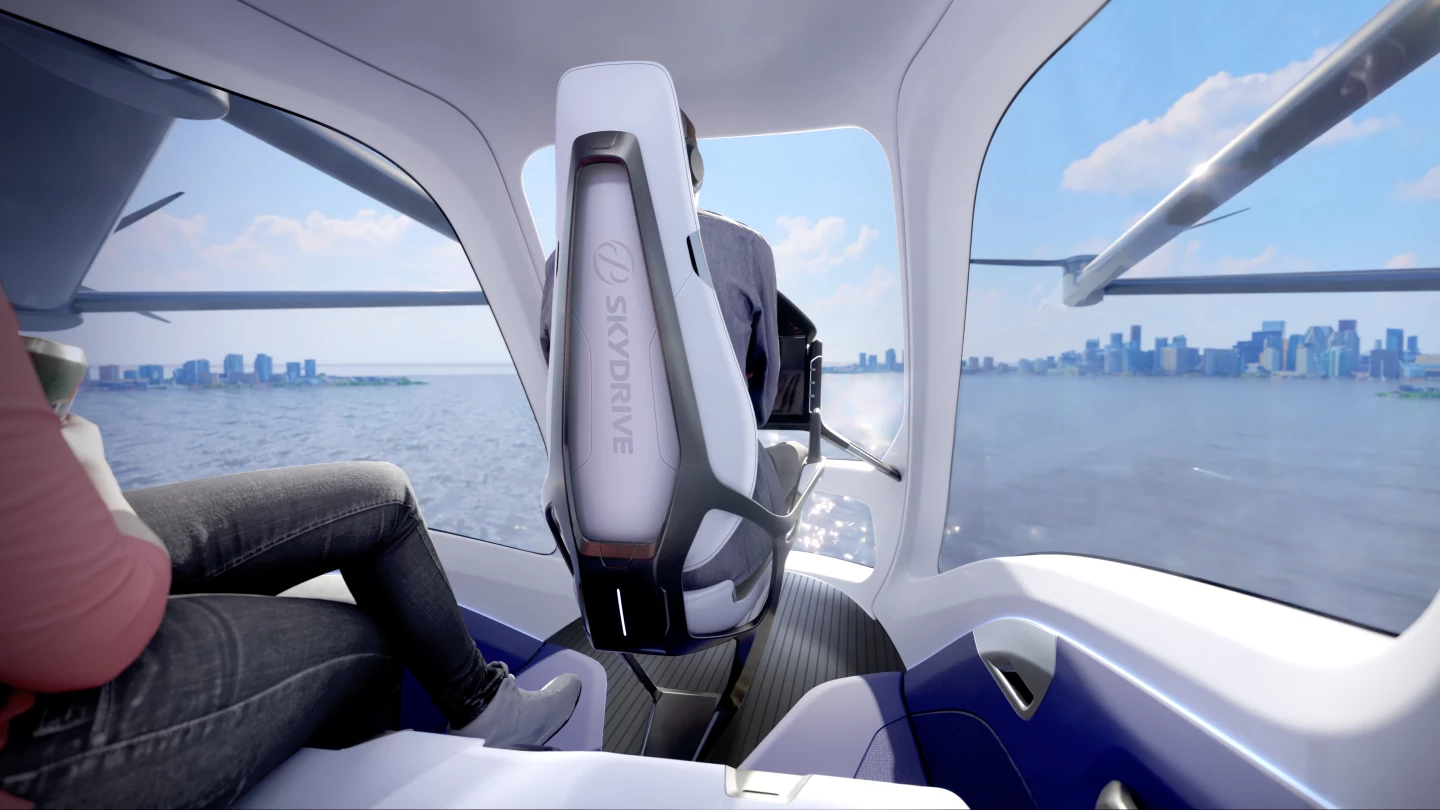
Plans call for SkyDrive to start making the aircraft in early 2024, and to that end the company is building on a collaboration with the Suzuki Motor Corporation that began in March last year, setting up a new subsidiary to focus on production at a Suzuki facility in the Shizuoka Prefecture of Japan.
The eVTOL will then be prepared for airworthiness certification in time for the World Expo 2025 event, followed by type certification in 2026 ahead of full production and delivery to customers. A Paris Air Show briefing document also reveals a development timeline that will see a doubling of range by 2029, and autonomous operation with three passengers for 40 km (25 miles) per charge by 2031.
SkyDrive also aims to seek type certification from the Federal Aviation Administration with a view to starting operations in the US.
Source: SkyDrive
